Article - Burgundy
Here are 12 uncompromising Burgundy stars you should know
They are shaping and improving Burgundy right now… and you don’t want to be the last to discover who they are. Find out here.
If there’s one place in the world every winemaker dreams of exploring, it’s Burgundy: the bastion of the world’s most coveted wines. Burgundy is breathtaking, and Burgundy is intoxicating in every imaginable way. For centuries, the vineyards have been meticulously tended by skilled hands. Hands whose expertise has been passed down from generation to generation.
One might think that the perfectly placed slopes in Burgundy and their historical significance would inspire awe in anyone who dares to create wine from this region. But that is not the case.
New philosophies have emerged. New techniques have been tested. New visions are born.
Outdated norms do not stubbornly hold back Burgundy, but instead shape itself as new forces enter the scene and boldly push the boundaries of what the bastion can deliver. We want to share our secret so you can get to know tomorrow’s Burgundy stars before anyone else. Burgundy is on the move, and here are the new voices.
Michel Rebourgeon – Tomorrow’s Star in Pommard
In the heart of Pommard lies a small, family-owned estate whose history, proud traditions, and respect for nature date back to 1540. When Michel Rebourgeon took over the estate from his parents, Marie and Emile Claude, in 1964, it was renamed after him. In 1995, Michel passed the running of the domaine to his daughter, Delphine, and her husband, Stephen Whitehead. While remaining firmly rooted in the estate’s traditions, they expanded the holdings to 4.25 hectares spread across three villages: Pommard, Beaune, and Volnay.
Domaine Michel Rebourgeon is therefore a deeply rooted Burgundy domaine. Still, it wasn’t until William Whitehead, son of Delphine and Stephen, took over the reins at Michel Rebourgeon that the winery truly began to demand our attention.
We’ve been following William Whitehead since 2019, and the improvements made under his leadership are phenomenal. William brings out the absolute best from the domaine’s relatively limited holdings. He is exceptionally skilled, and from the beginning, we’ve been impressed with the quality of his wines, despite his very young age. William has introduced several changes to the winemaking process, including a gentle vinification method and an increased emphasis on terroir. His approach has significantly improved the quality of the estate’s wines and has cemented his position as one of Burgundy’s most promising young winemakers – tomorrow’s star in Pommard.
Fun fact: William Whitehead is the 15th generation in the family business, making it one of the oldest family-owned domaines in Pommard – indeed, in all of Burgundy. The traditions live on with horse-drawn plowing in the vineyards and extremely low yields. When people say wine is made with respect for history… they really mean it here.
Domaine Simon Colin – A Great Talent with Innate Intuition
Simon Colin is young, but already an established winemaker and a star in Chassagne-Montrachet. As the son of Philippe Colin and nephew of Bruno Colin – both acclaimed winemakers in Burgundy – it’s no surprise that Simon is making his mark on the global wine scene.
We’ve been following Simon Colin since 2020, and from the moment we first tasted his wine, we knew he was an exceptional talent. His fantastic wines are, of course, also a result of experience, despite his young age. It’s the product of a childhood spent in the heart of Burgundy’s wine world and his time as assistant winemaker at Domaine Etienne Sauzet, as well as in South Africa and Oregon. It’s the result of his willingness to experiment with various techniques and styles. He’s destined to take his talent far. But Simon Colin has something more: an innate intuition that enables him to craft exceptional wines.
In 2021, Simon took over two-thirds of his father’s vineyards. From 9.3 hectares across terroirs in Saint-Aubin, Santenay, Maranges, and Chassagne-Montrachet, he now produces wine under the label Domaine Simon Colin.
Fun fact: Simon Colin is approachable and highly likeable. With his backward cap, he works tirelessly, curiously, and with full dedication to winemaking. He began his wine journey in 2017 with just nine barrels in a garage. He enjoys experimenting with alternative aging methods, including the use of ceramic eggs and glass globes, to create wines with unique character and finesse. This curious approach blends tradition with innovation and reflects Simon’s commitment to exploring new dimensions in winemaking.
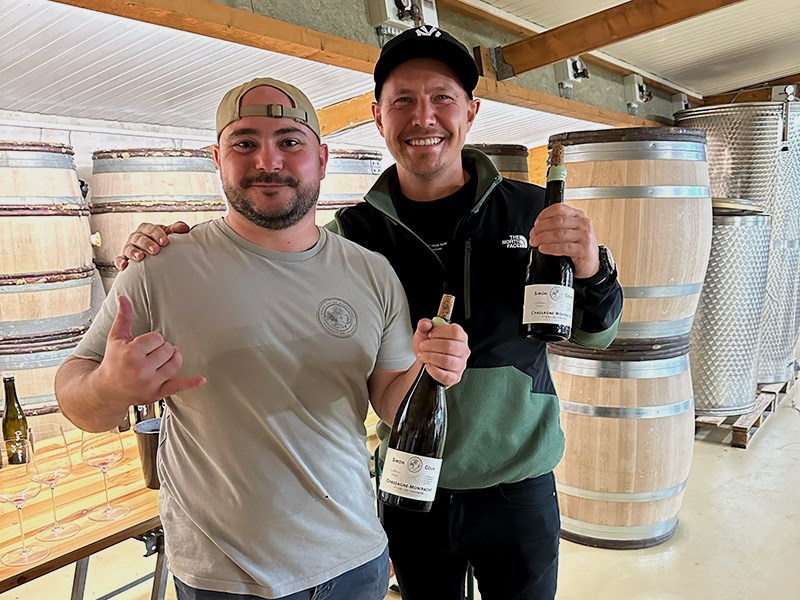 Simon Colin & RareWine founder, Rasmus Nielsen
Simon Colin & RareWine founder, Rasmus Nielsen
Domaine Pierre-Vincent Girardin – Rising Star No More
We cannot talk about the future shapers of Burgundy without mentioning Pierre-Vincent Girardin. In addition to being a favorite here at the RareWine office, he is both unassuming and incredibly talented.
We have previously referred to Pierre-Vincent Girardin as Burgundy’s rising star – a statement that’s already outdated. Pierre-Vincent is exceptionally skilled and has truly solidified the substance behind his craft, establishing his name. Perhaps he was a rising star once, but now he’s here to stay: recognized as one of the great names in Meursault.
Read our in-depth article: Pierre-Vincent Girardin | The Rising Star of Burgundy?
Domaine Bruno Clair – A New Generation’s Intriguing Perspective
Domaine Bruno Clair is well worth a visit. It blossomed from the historic and highly regarded Domaine Clair-Daü, which not only had a significant influence on the region’s reputation but was also a true pioneer in Burgundy. Clair-Daü was dissolved in 1985 due to internal family disputes, resulting in its division among several family members. Some parcels went to Louis Jadot, while Bruno Clair chose to start anew in 1979 with Domaine Bruno Clair, retaining some of the same parcels and values, but with his vision.
Since then, Bruno Clair has built a reputation for producing classic, traditional, and terroir-driven wines with great authenticity and depth – especially in areas like Marsannay, Gevrey-Chambertin, and Morey-Saint-Denis. We’ve followed Bruno Clair for many years, but something interesting has happened since Bruno’s son Arthur fully joined the domaine in 2018.
Today, Arthur is primarily responsible for the cellar and vinification, bringing a fresh, new-generation perspective that emphasizes greater precision, gentler vinification, organic practices, and meticulous attention to detail, all without compromising tradition. Under his influence, the wines have become purer, more feminine, and more refined. Bruno Clair is a notable domaine with a diverse portfolio, ranging from affordable wines to top-tier expressions, including Clos St. Jacques, Bonnes-Mares, and Clos de Bèze.
Fun fact: On a daily basis, Arthur works closely with his brother Edouard. Arthur’s most notable contributions include introducing gentler extraction methods and increased use of whole clusters in the winemaking process, reflecting a modern approach and a response to climate change. This approach has helped preserve the wines’ freshness and complexity, while staying true to the estate’s signature style of delicate red fruit and elegance.
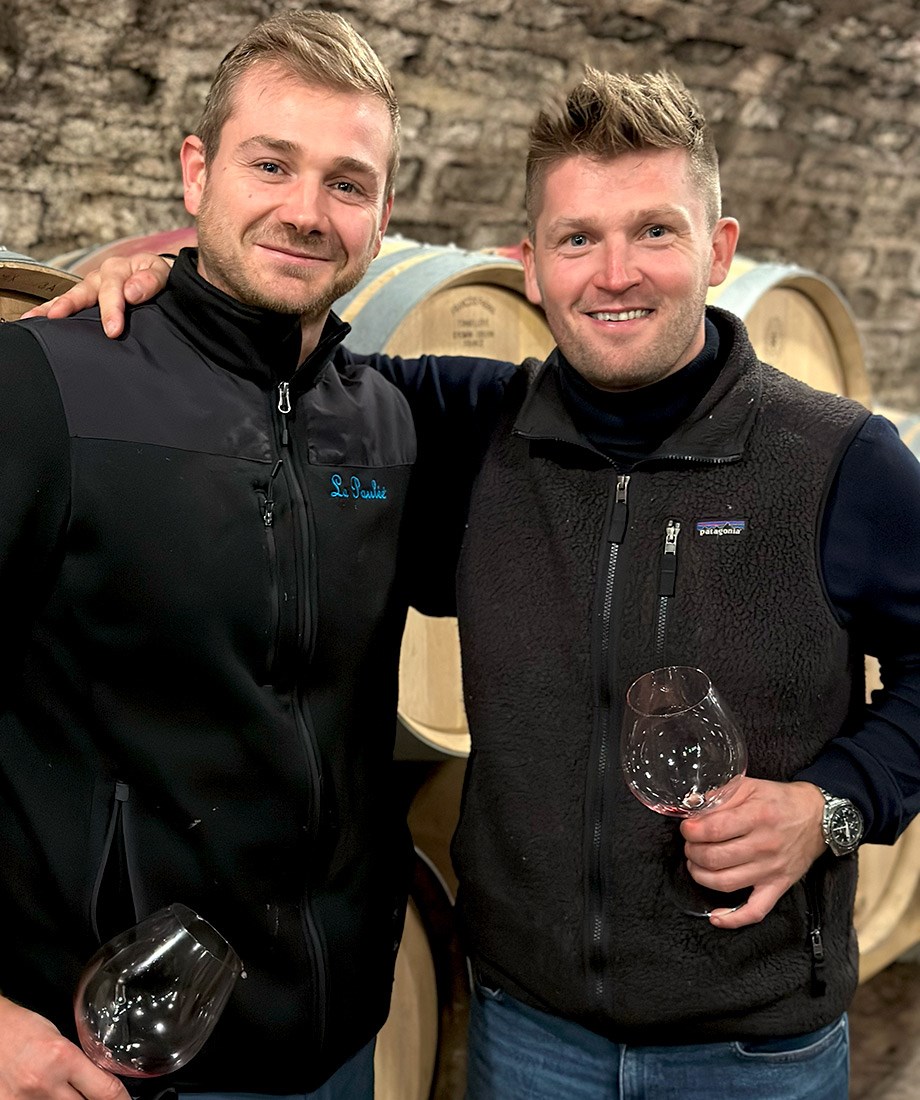 Arthur & Mads, RareWine CEO
Arthur & Mads, RareWine CEO
Domaine Bastian Wolber – Steiner Roots Paving the Way
Sebastian Wolber grew up in Germany and was shaped by a Rudolf Steiner school education, which instilled in him a natural urge to explore, create, and stay connected to nature, even though he initially chose to study German tax law. At the same time, Bastian’s brother moved to Burgundy to become a winemaker, landing jobs at renowned estates like Domaine Leflaive and Comte Armand.
During a visit to his brother, Bastian tasted a bottle of Ganevat that reportedly blew him away. He left tax law behind and began chasing the goal of recreating that Ganevat moment. Bastian went on to work at Domaine Leflaive, with Rudolf Trossen in the Mosel, and Jean-Marc Dreyer in Alsace. In 2019, he finally apprenticed with Ganevat himself. However, a broken hand from a skateboarding accident made him unable to work, and he returned to Germany, where he began making his own wine under the name Laisse Tomber.
Laisse Tomber started as a German project but eventually moved to Burgundy, where Bastian also worked for Jean-Yves Bizot while developing his ventures. Today, Wolber has established his cellar in Volnay, where he vinifies all his wines under the name Domaine Bastian Wolber.
Wolber has built a small, niche domaine that produces unconventional cuvées. He draws on his Steiner roots, employing minimal intervention, a deep focus on nature, organic farming, and, above all, biodynamics. He creates terroir-driven, pure, and authentic wines. We’ve had the pleasure of tasting his 2023s on several occasions, and they are, without a doubt, among the best we’ve tasted. Bastian is immensely talented and someone to watch – if you can even get your hands on his extremely limited wines, which have gained great acclaim among connoisseurs.
Fun fact: Bastian Wolber named his wine project Laisse Tomber after the skateboarding accident that changed his life. The name means “let it fall” or “forget it” and reflects both his humor and his ability to let go. The label shows a rider falling off a horse – a nod to his mother’s background and his own experience. The project symbolizes a life philosophy of accepting change and finding beauty in imperfection.
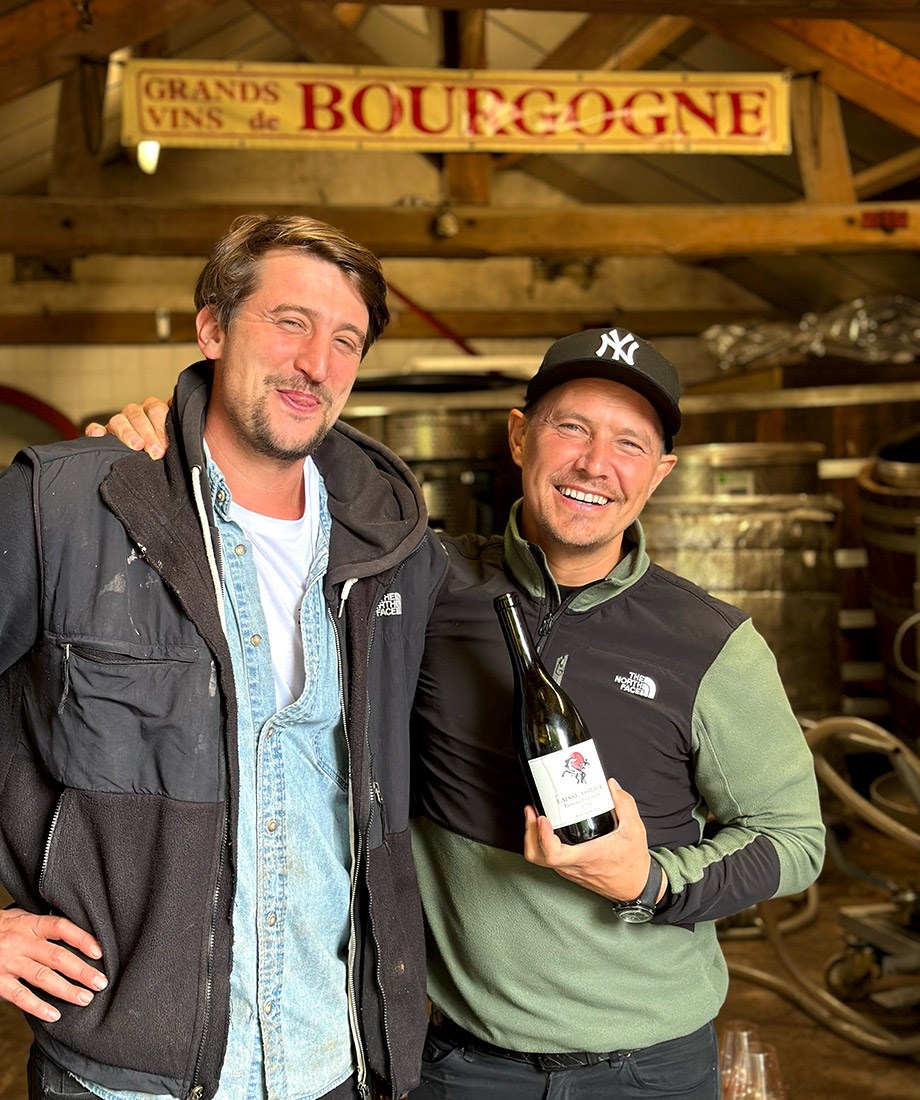 Bastian Wolber & Rasmus Nielsen, RareWine founder
Bastian Wolber & Rasmus Nielsen, RareWine founder
Domaine Coffinet-Duvernay – Curiosity Fuels the Estate’s Reputation
Deeply rooted in the prestigious village of Chassagne-Montrachet, Domaine Coffinet-Duvernay owns 6.5 hectares of vineyards, including village, premier cru, and grand cru classifications. The vineyards have been in the family since 1860, but it wasn’t until the 1950s, when Cecilie Pillot and Fernand Coffinet took over, that the estate truly began producing remarkable wines.
In 1989, the couple passed the estate on to their two daughters. One of them, Laura Coffinet, and her husband Philippe Duvernay established Domaine Coffinet-Duvernay on half of the property. In 2012, their son, Bastien Coffinet, became a full-fledged part of the family business, and he has been instrumental in further elevating the domaine’s reputation.
Bastien is serious, detail-oriented, and strongly terroir-focused in his approach. He holds a deep respect for tradition, stays true to his family's style, yet brings a curiosity that makes him particularly exciting to follow. If you don’t already know him, you should definitely check him out.
Fun fact: Visit Domaine Coffinet-Duvernay. Taste the wines. And if you're lucky, you might get to taste old bottles from Bastien’s grandfather's era – hidden deep in the back of the domaine’s cellar, a testament to decades of quality winemaking. It’s pure magic.
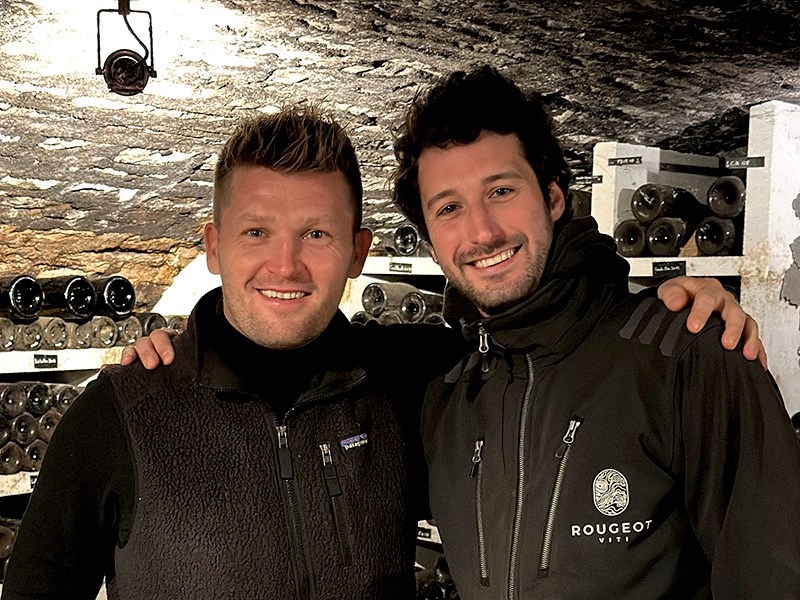 RareWine CEO Mads Jensen & Bastien Coffinet
RareWine CEO Mads Jensen & Bastien Coffinet
Domaine Amiot-Servelle – Sibling Synergy Drives Quality Leap
Domaine Amiot-Servelle is a family-owned winery located in Chambolle-Musigny. Founded in 1920 by Clément Tachot, the estate has remained in family hands ever since. In 1989, Christian Amiot and Elisabeth Servelle took over operations and renamed it Domaine Amiot-Servelle.
In recent years, the domaine has undergone a remarkable renewal, thanks primarily to the next generation – siblings Prune and Antoine Amiot – who have been leading both vineyard and cellar operations since 2020.
Prune Amiot, a trained oenologist, is the driving force behind the winemaking. She combines a deep respect for her family's heritage with a modern, sensitive approach to production, emphasizing biodynamics and organic practices. Her experience in Côte-Rôtie and at Maison Jaffelin in Beaune has given her a steady hand and a sharp eye for detail, clearly reflected in the wines’ purity, elegance, and terroir expression.
Antoine Amiot, with a background in both viticulture and wine economics, has taken particular responsibility for the domaine’s strategic and structural development. Under his leadership, a new, modern winery was completed in 2022. Designed around biodynamic principles – including gravity-fed vinification, sustainable materials, and natural temperature regulation – the facility reflects a desire to merge tradition with precision and sustainability, without compromising authenticity.
The new winery marks a significant turning point for the future of Amiot-Servelle wines. With more space and a biodynamic focus, vinification has improved considerably, raising the quality of the wines to an entirely new level, earning the estate a well-deserved spot on this list. To truly understand Chambolle, you need to taste these wines. They are top tier.
Fun fact: The architect behind Amiot-Servelle’s new winery is Marine Jacques-Leflaive, daughter of legendary biodynamic wine pioneer Anne-Claude Leflaive. Through her firm Atelier Zéro Carbone Architectes (AZCA), she has left a distinctive mark on modern, sustainable winery architecture in Burgundy. In addition to the new Amiot-Servelle winery in Chambolle-Musigny, AZCA has designed notable projects for other prominent producers including Anne Gros, Bizot, Trapet, Dujac, Rousseau, and Domaine Leflaive.
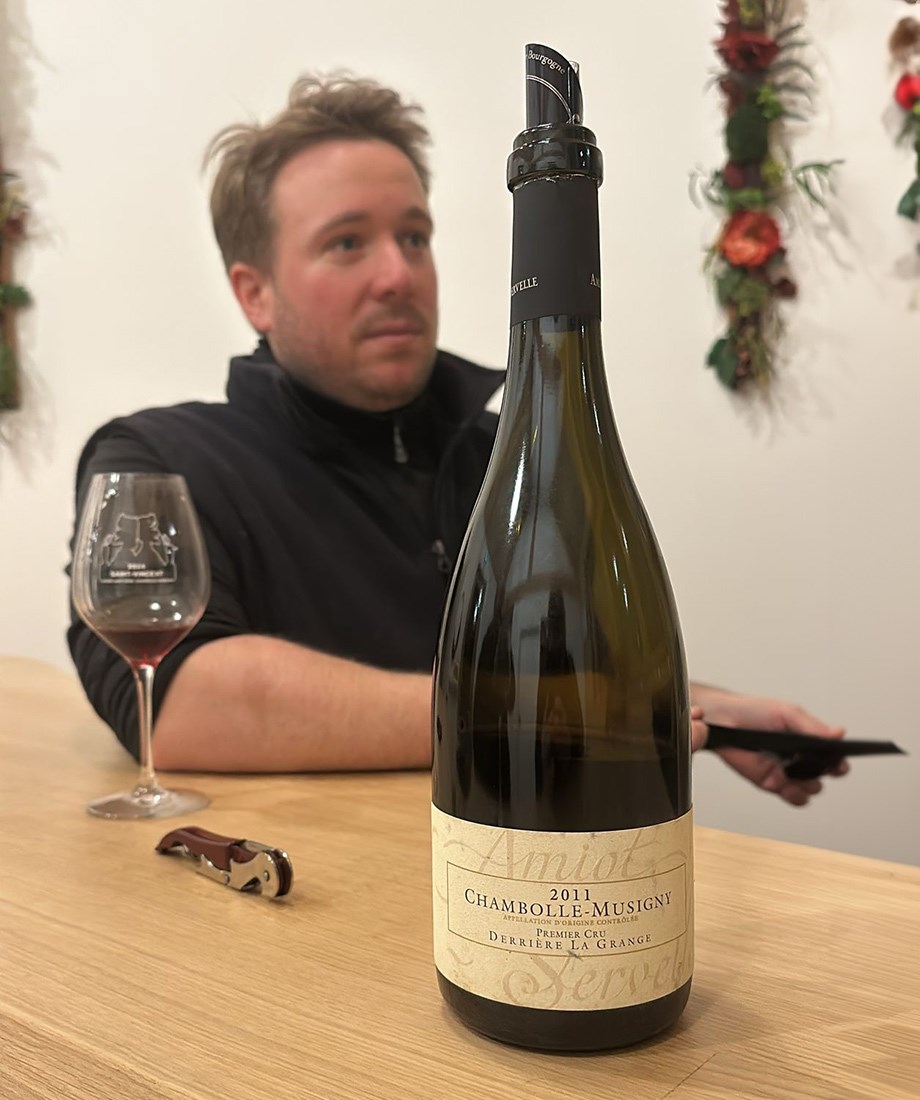 Antoine Amiot
Antoine Amiot
Domaine Jean-Marc Pillot | The Legacy Lives On with New Energy
Jean-Marc Pillot represents the fourth generation of winemakers from his branch of the Pillot family in Chassagne-Montrachet. He began working alongside his father, Jean, in 1985 and took over the estate in 1991. Under his leadership, the domaine has grown to approximately 15 hectares, producing around 60,000 bottles annually. Jean-Marc modernized the winery and built a new cellar.
Antonin Pillot, Jean-Marc’s son, joined the estate in 2019. Before returning to the family domaine, Antonin gained experience through internships at Bouchard Père & Fils in Burgundy and Polley Wines in Tasmania. Bringing innovation and a fresh perspective, Antonin has played a key role in the domaine’s shift toward organic practices and was instrumental in achieving organic certification in 2024. In 2023, he was recognized as a ‘Rising Star’ by the prestigious Bourgogne Aujourd’hui magazine for his contribution to the region’s winemaking community – undeniably one of Burgundy’s rising talents.
While Jean-Marc continues to emphasize terroir and craftsmanship, Antonin brings new ideas and techniques to the production. Their father-son partnership is one of the key reasons you should know Domaine Jean-Marc Pillot. Already a respected name in Chassagne-Montrachet, their wines embody both heritage and renewal, and they’re clearly on track to set new standards for the domaine’s future.
Fun fact: When Antonin officially joined the domaine, his first move was to begin harvesting earlier. He then initiated the transition to organic farming, a cause close to his heart. In an interview about environmental certifications, Jean-Marc reportedly said: "le jeune s’en occupera" (“The young one will take care of it”). And so he did. By the way: Burgundy’s new generation of winemakers is tightly connected – sharing knowledge, challenges, and successes. That network includes Antonin Pillot, Bastien Coffinet, Antoine Amiot, and Simon Colin among others.
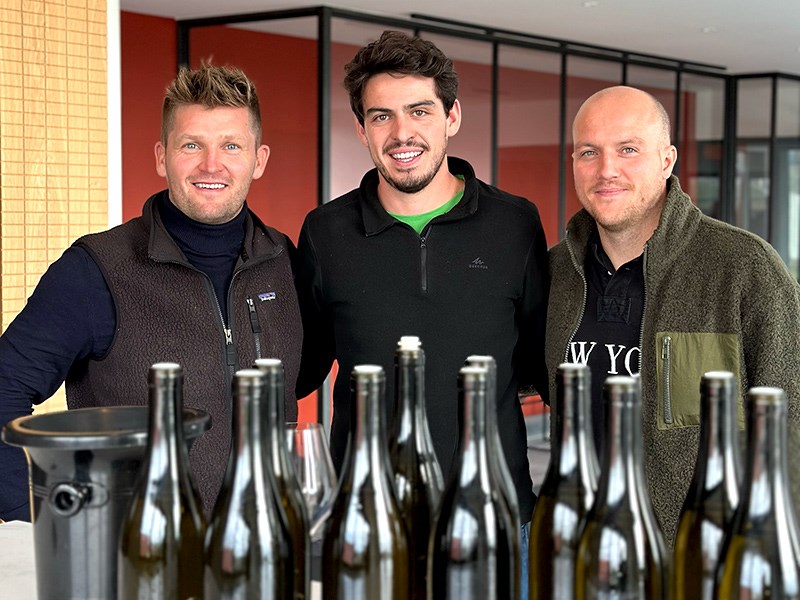 RareWine CEO, Mads Jensen, Antonin Pillot & RareWine Head of Purchasing Emil Ledet
RareWine CEO, Mads Jensen, Antonin Pillot & RareWine Head of Purchasing Emil Ledet
Jerome Galeyrand – Gamechanger in Côte de Nuits
In 2002, Jérôme Galeyrand founded the eponymous domaine. His wine journey began in the 1990s, when he started helping out at Domaine Alain Burguet in Gevrey-Chambertin. This formative experience inspired him to pursue a winemaking career. After completing his education at the wine academy in Beaune, he purchased his first tiny vineyard of just 0.05 hectares and completed his first vinification that same year. Today, he cultivates 5.25 hectares.
Jérôme Galeyrand is a fascinating winemaker who has gained recognition for his exceptional skill and passion in expressing the unique character of terroir. His vineyards are farmed with a focus on organic and biodynamic principles, though they are not officially certified as biodynamic.
Galeyrand is based in Brochon – a small village in the Côte de Nuits region of Burgundy, just north of Gevrey-Chambertin. Brochon does not have its own AOC (Appellation d’Origine Contrôlée) for village-level wines, so wines from here are typically labeled as Côte de Nuits-Villages. It is precisely in this category that Galeyrand has been a true game-changer for the entire area. In the past, no one paid much attention to Côte de Nuits-Villages wines, but that’s certainly no longer the case. Galeyrand paved the way, and others have since followed. Today, the quality of Côte de Nuits-Villages is at an all-time high.
In recent years, we’ve truly come to appreciate Galeyrand’s work. There’s been no major revolution – only the most obvious one: he makes genuinely great wine! He’s a maverick, a true pioneer, and that status is increasingly reflected in the price of his wines over time…
And this is precisely where you can stand out with your wine knowledge among friends and peers. Because the above is (still) not widely known. If you want to impress wine connoisseurs, here’s your chance – at reasonable prices.
Fun fact: His Marsannay Clos du Roy is a magnificent wine that evokes thoughts of Bizot. Visit him. Taste his wines. Let yourself be seduced. Galeyrand’s Côte de Nuits-Villages Le Retraits is another standout. It was one of Mads Jensen’s (CEO of RareWine Group) top five wines in 2024:
“It’s a monumental wine, even though it’s just a village wine!”
Domaine Edouard Confuron – Refinement and Elegance
For six generations, the Confuron name has been associated with outstanding Burgundy wines. In 1989, François Confuron and Claudine Gindre added their surnames to the label, officially establishing Domaine Confuron-Gindre. Like many others in the region, the estate is inspired by biodynamics, with a strong focus on vineyard work, vine health, and soil microbiology, considered more critical than the vinification process itself.
Edouard Confuron, the son of François and Claudine, has been working alongside his father since 2016. He has refined the vineyards, honed the processes, and, in parallel, launched a micro-domaine under his own name. Since 2021, he has had complete freedom to pursue his ideas there.
Edouard selects grapes from his father’s parcels across Vosne-Romanée, Nuits-St-Georges, and Gevrey-Chambertin. While François’ wines are known for being powerful and muscular, Edouard’s are marked by finesse and refinement. Though his cuvées are still relatively under the radar, we have no doubt that his project – and his wines – are destined for greater recognition. If you're searching for true value-for-money in Burgundy, look no further.
Fun fact: When Edouard Confuron launched his micro-domaine, he started with just one wine – and designed the label himself on his laptop, right in the cellar, while tending to his very first cuvée. It was hands-on, uncompromising, and 100% his own – just like the wines are today.
Paul Gros – Confidently Going Against the Grain
Paul Tollot-Gros is yet another young and promising winemaker representing the next generation of the esteemed Gros family. He is the son of none other than Anne Gros, a prominent and well-established winemaker based in Vosne-Romanée.
In 2021, Paul Gros founded his own domaine, and in 2022, he presented his first vintage. As a member of the Gros family, Paul has access to some of the finest terroirs in Burgundy. Alongside his own project, he plays an integral role in his mother’s renowned winery.
Although Paul Gros’ domaine is still in its early stages, we have high expectations for his future as a winemaker. While most of the new generation in Burgundy is producing lighter, more delicate, and elegant wines, Paul is taking a different path. He embraces oak. His wines are allowed to be voluminous and opulent, embodying the classic style of Vosne-Romanée.
As more and more young producers are moving away from oak use entirely, Paul remains loyal to new barrels and traditional methods. But this isn’t about nostalgia – it’s a deliberate choice, driven by his belief that the greatest wines still require both depth and aging potential. A wine with edge demands a winemaker with character.
Fun fact: Paul Gros made his first winemaking experiments as a teenager, using an old plastic barrel he had stashed away in the back of his mother’s cellar. Keep an eye on Paul Gros if you appreciate classically crafted Burgundy with structure and a clear oak signature.
Domaine Arnaud et Sophie Sirugue-Noëllat – Modern Ambitions and a New Style
Domaine Arnaud et Sophie Sirugue-Noëllat is a young and promising estate in Burgundy, founded in 2016 by the husband-and-wife team Arnaud Sirugue and Sophie Noëllat. Both come from prominent winemaking families in Vosne-Romanée: Arnaud from Domaine Robert Sirugue and Sophie from Domaine Michel Noëllat. Until 2022, their wines were released under Domaine Robert Sirugue and represented classic, old-school value-for-money Vosne-Romanée. But starting with the 2023 vintage, the wines are bottled under the new domaine name: Domaine Arnaud et Sophie Sirugue-Noëllat. This shared project blends deep-rooted family tradition with modern ambition and a fresh stylistic direction.
The young couple has built a large, state-of-the-art winery right next to Domaine Anne Gros. We visited them and tasted their 2023s – some of the finest barrel samples we've tried from that vintage. The wines show a complex palette and greater density, and we’re excited to taste them once they’re released in bottles. Despite the domaine’s short history, Arnaud and Sophie have already made a name for themselves as two of Burgundy’s most promising new producers. With access to prime vineyard sites, they are well-positioned to carry the family legacy into a new era.
Fun fact: When Arnaud and Sophie built their new winery in Vosne-Romanée, they intentionally chose a location right next to Domaine Anne Gros – not for prestige, but to be close to the energy and inspiration of neighbors they admire. It’s a modern statement in the heart of classic Burgundy: This is where we belong – and we mean it.
The Future of Burgundy Is Secured – and Now You Know Why
New philosophies are emerging in Burgundy. New techniques are being tested. Fresh visions are coming to life. And while the latest generation of young winemakers is extraordinarily skilled and has truly secured the region’s future, their success is deeply rooted in the work that has been done, generation after generation, in the vineyards and the cellars.
If you're looking for wines from producers who are actively shaping the future of Burgundy, your search can pause here for a moment, because the names we've presented above are exactly where to find that value.
There’s no doubt: the overall level in Burgundy has risen. Practices like biodynamics and organics are now firmly established, and today’s talented winemakers can focus far more on quality than quantity. They can explore new techniques, cultivate new philosophies, and experiment freely.
And they can do so because their parents made money. The economics of Burgundy now make it more feasible to produce truly exceptional wine, and as a result, we’re seeing a widespread lift in quality. Everyone has stepped up their game, and it’s increasingly rare to see a "bad" vintage when it comes to quality, though, of course, some years still stand out as extraordinary.
Burgundy remains the global epicenter of fine wine, and the region’s prestige benefits all winemakers who are bold enough to dream big. The future of Burgundy is not only secure – it may be more exciting than ever before.
